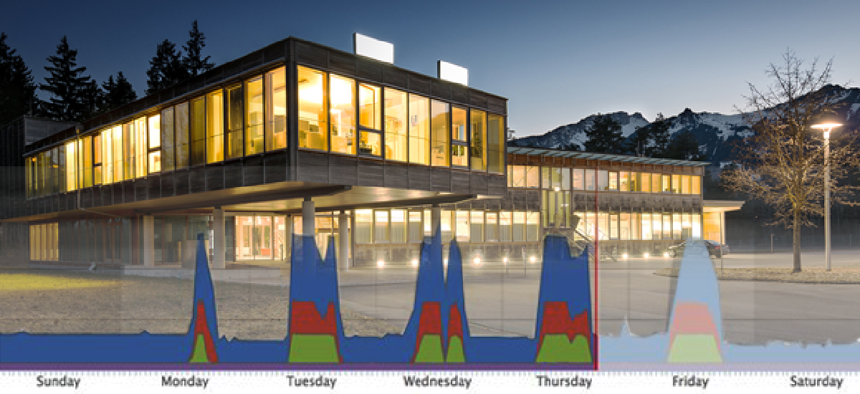Power to the people: CMU dashboard puts a face on energy use

A Web-based dashboard developed by a Carnegie Mellon University team shows that energy may be used more efficiently when end users are handed control.
New energy-savings technologies aren't going to help agencies and businesses if people don’t use them. That’s why Ray Yun, a doctoral student at Carnegie Mellon University’s School of Architecture, and his team developed a Web-based dashboard to help people see how much energy they use at work.
Even better, users can employ the dashboard to remotely control devices and reduce energy consumption.
“We noticed that office workers don’t get the electricity bills, so they don’t know how much energy they consume, and they don’t pay the bills so they have very little incentive making efforts to save energy at work,” Yun said. “It’s a challenge, but we thought it was a good opportunity to make a contribution to promote sustainability at work, not by giving them any rewards or penalties, but just by providing human-computer interaction.”

According to Yun, the dashboard was tested with three different groups of employees at a nearby company in Pittsburgh. One group could only monitor energy usage, one group could both monitor usage and remotely switch devices on or off, and the third group had the additional capability of setting weekly schedules to control device energy loads. In addition, the CMU team monitored the energy usage of a control group.
In all cases, the dashboard employed commercially available meters and switch from Plugwise to collect usage data and to control devices.
The results were striking. The group that received usage data but no controls cut its consumption by 9 percent. The group that was given remote control over devices cut its usage by 20.2 percent. And the group that had device-switching control and scheduling capabilities cut usage by 35.4 percent.
The control group, by the way, cut energy consumption by 3.6 percent, a fact that the team attributed to their awareness that usage was being monitored.
While Yun is impressed with the early results, he’s also aware that participants’ awareness of the study had an unmeasured impact on the results. And it’s not surprising that the more information and control you give a group, the more participation you’ll see from that group. The ability to remotely control office devices is likely to cause participants to use those controls just for the novelty of it – at least for a while.
Getting long-term results from users, however, is going to require making it easier for them to access that information and to control devices. Accordingly, the team is looking to expand the availability of the dashboard. “It’s a Web-based system for now, but we’re in the middle of a process to make it for multiple platforms, including smartphones,” Yun said.
Ultimately, users may need encouragement to maximize energy savings. “With that in mind, we’re also working on a gamification strategy,” Yun said.





